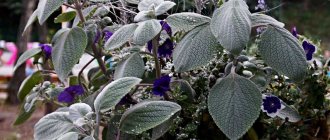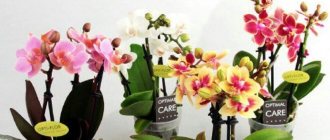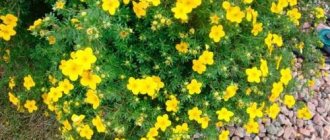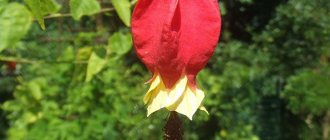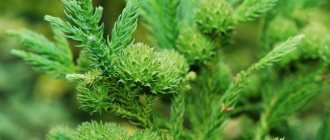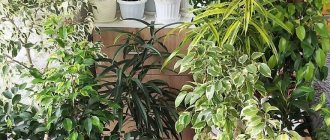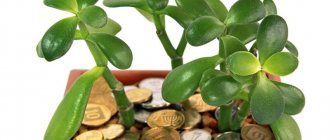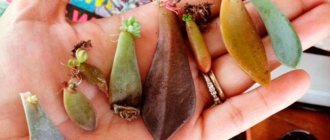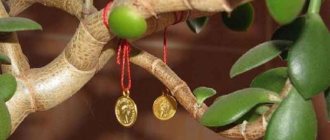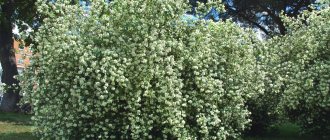Maple is extremely popular because of its appearance, especially in the fall, when its leaves turn fiery red, orange or yellow. This genus consists of more than 150 species. It can be presented in the form of a tree or shrub. In our article we will tell you about the most popular types and varieties of maple, give their brief characteristics and some tips on growing.
Norway maple or sycamore (Acer platanoides)
It is one of the most popular types of maple and is very often found in parks and forests. It is characterized by rapid growth rates, which makes it possible to create green fences and decorate parks from it in a relatively short period of time. In early spring, resinous buds form on the branches, which after some time turn into leaves. The leaves have a five-lobed configuration, are large in size, each blade ends with a sharp end. Depending on the season of the year, the leaves can be light green, green, yellow, orange-red, red or brown. The leaf surface is permeated with clearly defined veins. The tree can grow more than 30 m in height.
Young shoots are covered with smooth red-brown bark. Old shoots are distinguished by bark with cracks and a brownish-grayish color. The crown is spreading and dense. During flowering, the trees are covered with green or yellow small flowers that form shield-shaped inflorescences. Flowering begins in April-May. The flowers bloom before the leaves are formed, so during flowering the tree looks very beautiful and stands out from other trees. Flowers also release a pleasant sour-honey aroma that attracts insects. There are different types of flowers on the same tree. These plants are considered honey-bearing; each flower contains a large amount of nectar. Maple honey is light yellow in color, has a pleasant aroma and exquisite taste. At the end of flowering, seeds are formed, which are attached to two-lobed wings. After the seeds ripen, they tear off the branch and are carried by the wind over large areas. After overwintering under a layer of foliage, the seeds germinate in the spring and cover the soil with young shoots.
Diseases and pests
The main pests of abutilon are mealybugs, scale insects, aphids and spider mites . The last parasite appears on the plant in the presence of dry air; periodic spraying of the leaves of the crop will help prevent its appearance.
Aphids can be driven away by treating the leaves with a soap solution or simply driving away the insects with a stream of water. To combat mealybugs, an alcohol solution is used, which is soaked in a cotton swab and applied to the leaves.
Among the diseases, the crop is often affected by powdery mildew.
Symptoms of this disease can be easily identified by the appearance of a sticky black coating on the leaves.
The chemical preparation actara will help get rid of powdery mildew.
Gardeners often encounter another popular indoor maple disease, root rot.
This disease is associated with wilting and shedding of leaves from the crop. Effective treatment is considered to be replanting the flower, removing rotting roots and treating plant wounds with crushed coal.
Other problems with abutilone are associated with improper crop care. It can be:
- sudden changes in room temperature;
- lack or excess of moisture in the soil;
- crown thickening;
- no spraying, dry air in the room.
These problems lead to yellowing and curling, and sometimes even falling of the flower leaves.
Ash-leaved or American maple (Acer negundo)
This tree is considered one of the most unpretentious and hardy of its kind, therefore it is often used for planting in large cities. The plant is also characterized by increased resistance to dust and gas, and has enhanced regeneration properties. This maple grows in height up to 15-20 m, has a trunk circumference of about 40-60 cm. The crown has slightly drooping shoots, develops unevenly, the trunk is slightly curved, covered with gray bark with small grooves. The leaves are arranged oppositely on long petioles, have 3-7 lobes, a length of 15-17 cm, an odd-pinnate configuration and a light green color.
The culture blooms with dioecious flowers: male flowers open earlier than female ones. The aroma of flowers attracts bees, which take nectar from them for honey. Flowering occurs in late spring early summer and lasts for 2 weeks. The flowers are small green in color and bloom along with the leaves. At the end of flowering, fruits are formed, consisting of a seed and an impeller. Full ripening of the fruits occurs in mid-autumn, but they continue to hang on the shoots until spring. More than 500,000 lionfish form on one tree. The average lifespan of a tree is 80-100 years in the wild; in growing conditions under unfavorable factors it is about 30 years.
Reproduction
Propagation of the crop is possible using cuttings, as well as by seed.
Sowing of grains is carried out in early or mid-March in a pre-moistened nutrient mixture of peat and sand in equal proportions.
The seeds are buried 1.5 centimeters into the ground.
After this, the seedling box should be placed in a well-lit, warm place and covered with a transparent film. When grown indoors, the first shoots appear within a week after sowing.
For propagation by cuttings, sections of lateral shoots up to 12 centimeters long are taken from the crop. The lower leaves need to be removed from them, after which the vegetative organs are placed in a root-forming solution, then buried in a moistened nutrient mixture and a film cover is built on top.
After 2-3 weeks, when the first leaves appear on the shoots, the greenhouse is removed and they begin to care for the cuttings as if they were an ordinary plant.
Field, plain or Neklen maple (Acer campestre)
This type of maple is used for park plantings due to its medium growth. In addition, it is very undemanding to growing conditions and does well in urban conditions of gas pollution and dust. The tree grows up to 12-20 m in height and is characterized by a broadly conical crown consisting of bright green five-lobed leaves. After all the leaves on the tree have blossomed, flowering begins. Flowers cover the crown and give the tree a very decorative appearance. The trunk is covered with light brown bark with light white stripes. This species is slightly frost-resistant and prefers to be grown in warm climates. Bonsai is often made from this species, since the tree tolerates cutting and shaping well. The plant has stable immunity against diseases and damage from insect pests. The root system is very powerful and branched, thanks to which the tree tolerates drought and soil compaction well.
This species has several varieties that differ in popularity:
- Field maple Elisriysk. A tree of this variety grows up to 8 m in height. It has a dense crown of a spherical configuration. The crown circumference is about 5 m. The shoots are covered with large five-lobed leaves. The leaves bloom in mid-spring and are reddish in color. When grown in the sun, they change color to yellow. When grown in the shade - green. During flowering, small yellow-green flowers bloom, collected in corymbose inflorescences. At the end of flowering, two-winged seeds are formed.
- Field maple Red Shine. This tree is short in stature, about 5 m. Its crown and spreading trunk are covered with gray bark. The leaves are large, multi-lobed, and have a red-purple color. It blooms with yellow or green flowers collected in medium-sized inflorescences.
- Field maple albovariegatum. This variety is characterized by trees no more than 5 m high. It is used to create hedges. It has a strong trunk and a wide branched crown, which is formed from the bottom of the trunk. The bark is silvery in color and covered with small cracks. The large leaves are light green in color, changing to yellow in the fall.
- Field maple Queen Elizabeth. This variety is characterized by fast growth rates and vertically growing shoots that form a narrow pyramidal crown configuration. The crown circumference reaches 10 m, the height of the tree is 80 m. Due to the shape of the crown, this variety is often used to decorate alleys and garden parks. In mid-spring, the shoots are covered with large leaves that are light green in color. The plant feels good when grown in shaded areas, but cannot grow in marshy soil. It also tolerates gas and dust in the atmosphere well, which is why it is often grown in large cities.
- Red field maple. It has a slow growth rate, grows up to 8 m in height. It has a decorative branched crown. The tree got its name due to the fact that its young branches are dark red in color. During flowering, the entire crown is decorated with small green-yellow flowers that form racemose inflorescences. At the end of flowering, lionfish about 3 cm long are formed, which consist of one large seed. The palmate leaves are olive green in color. The root system is branched and located in the upper layers of the soil. Reproduction occurs by root shoots or by seeds.
- Field maple spherical. This variety got its name due to the spherical shape of the crown. The tree is characterized by slow growth and grows to a height of no more than 5 m. Young leaves have a red-orange color, changing to golden yellow in the sun. The flowers are small yellow-green, forming paniculate inflorescences. Lionfish fruits. The root is highly branched and grows in the upper layers of the soil. The crop is propagated by root shoots, seeds or grafting.
Caring for abutilone at home
For all its unpretentiousness, abutilon, like other representatives of the southern flora contained in our homes, needs good lighting, sufficient watering and warmth. However, there are nuances in caring for indoor maple that novice gardeners often miss. How to create optimal conditions for a luxurious green pet and make it bloom often?
Temperature and lighting
Abutilon, as a resident of the tropics, can grow and develop only in warmth, but too high temperatures, as well as too low, are harmful to it. Thus, the optimal temperature in summer is about 24°C. Indoor maple does not have a clearly defined dormant period, but in winter the air should be a little cooler - 14-17°C.
If the plant is kept outdoors in warm weather, you need to carefully monitor the weather. As soon as the thermometer drops to 12-15°C, abutilone should be brought indoors. And the maximum winter temperature that a cable car can withstand is about 10°C.
Both cold and heat can negatively affect the health of the plant: too low temperatures will cause leaf fall and the occurrence of rot, and too high temperatures will lead to the loss of buds and the cessation of flowering.
Lighting is an important parameter for growing indoor maple: there should be enough sunlight. It is better to place abutilon on southern, southwestern or southeastern window sills with good lighting. And you can shade the plant only on the hottest summer days. The florist must remember: the more light the abutilon receives, the more magnificent it will bloom.
[!] The only exceptions are variegated (variegated) varieties of ropeweed. In too bright sun the pattern of the leaf plate fades, so these varieties of indoor maple should be grown on eastern or western windows.
In autumn, winter and early spring, abutilons suffer from lack of sun. To correct the situation, you can organize additional illumination of the plant using fluorescent lamps.
Watering and air humidity
Abutilones are among those plants that do not accumulate moisture either in the roots or in the leaves. In their homeland, in the tropics, rain is a fairly common occurrence, and there is no need for water supplies. That is why special attention should be paid to watering indoor maple trees at home. The rope garden needs to be watered quite often and intensively, without allowing the earthen clod to dry out completely.
You can determine the need to add moisture by looking at the surface of the substrate - if the top layer of soil is dry, you can water it. At the same time, in summer, on hot sunny days, you need to water more often, and in cold and cloudy weather - less often.
At any time of the year, water for irrigation should be soft and warm. Tap water should be settled, filtered, and diluted with boiling water to 30°C.
[!] To acidify the soil, you can add a few drops of lemon juice to the water for irrigation.
Indoor maple prefers high humidity. This can be achieved by spraying the leaves of the plant, as well as placing the rope next to containers filled with water or wet pebbles. Abutilone especially needs to be sprayed on hot summer days, however, to reduce evaporation from the surface of the leaves, the procedure should be carried out in such conditions only early in the morning or late in the evening. Water for spraying, as for irrigation, must be settled and warm.
Soil and fertilizing
To grow indoor maple, you need a loose (water- and breathable) substrate with a slightly acidic reaction (pH - 5-5.7). Of the purchased options, a universal nutrient soil or a special soil for abutilone would be a good choice.
You can make your own soil mixture by mixing:
- 2 parts leaf soil
- 2 parts turf land
- 0.5 parts sand
- 0.5 parts perlite or vermiculite.
In addition, you can add a little coco soil and crushed coal to the substrate.
Don’t forget to have a sufficient (at least a quarter of the total volume of the dishes) layer of drainage, which can consist of expanded clay, broken bricks or clay shards.
Fertilizing with abutilone depends on the time of year and the phase of plant development. So in the spring, during the growing season, fertilizers with a high nitrogen content are needed (for decorative deciduous plants), and during the period of budding and flowering - those in which phosphorus and potassium predominate (for flowering plants). There is no need to feed abutilons in autumn and winter; at this time the plant rests.
Pruning (shaping) and flowering
Ropeweed belongs to the group of plants that develop quickly even indoors, and the growth of some species reaches 50 cm per year. Of course, this process must be controlled, achieving the desired shape and height of the bush.
Indoor maple pruning should be done after flowering in the fall or before the growing season begins, in early spring, cutting off the shoots by about a third of their length. This will not only allow you to regulate the size of the plant, but also achieve more luxuriant flowering - buds rarely appear on elongated old branches. Also, dry and broken branches and shoots that thicken the crown, that is, growing inward, must be completely removed.
Young rope plants begin to form when the sprout reaches a height of 20 cm. In order for the plant to later take the form of a spreading bush, the top of the main shoot is pinched, thus achieving the development of lateral branches. In addition, fragile sprouts must be tied to a support.
Despite the fact that some varieties of abutilon are capable of blooming all year round, the standard flowering time for indoor maple is from early May to late October. It happens that at home the rope plant does not bloom at all, in this case there is a high probability of errors in its maintenance, the most common of which are:
- lack of lighting
- violation of the watering and fertilizing regime
- ignoring crown pruning.
However, in the hands of an experienced and caring gardener, indoor maple always blooms magnificently and very beautifully.
Transplantation and propagation
The need to replant abutilon depends on the age of the bush. Young, actively developing plants should be replanted every year, older ones - no more often than once every 2-3 years. New containers for planting indoor maples should be only a few centimeters larger than the previous ones: too much free soil will negatively affect flowering.
The standard time for transplanting abutilon is early spring, before the start of the growing season.
Under room conditions, abutilone can reproduce in two ways:
- seeds,
- cuttings.
Propagation by seeds
Before planting abutilon seeds covered with a hard shell, they must be processed: washed, soaked in a stimulant and scarified. For scarification, sandpaper with medium grain is suitable, and the action itself must be performed very carefully, trying not to damage the embryo inside the seed. Treated factory seeds do not need to be scarified.
The seeds are planted in a small greenhouse, pre-filled with a damp peat-sand mixture to a depth of 2-3 mm, which is placed in a warm, well-lit place. In addition, special peat tablets can be used for planting. Further care consists of daily spraying of the substrate and ventilation of the greenhouse.
After the seedlings have 2-3 true leaves, they can be picked up and planted in separate containers.
[!] Hybrid abutilons, especially variegated ones, should not be propagated by seeds. With this method, varietal qualities are not transferred from the mother plant.
Propagation by cuttings
Cuttings of abutilone are best done in the spring, during the growing season. Cuttings are cut from young shoots, their length is 10-15 cm. Excess leaves should be removed, leaving only the top 2-3 leaves, and the cut should be dipped in any root formation stimulator. Then the prepared cuttings, like the seeds, are planted in a greenhouse filled with a mixture of peat and sand in equal proportions. About a month later, after the seedlings have taken root, they should be planted in separate pots.
Diseases, pests and growing problems
As mentioned above, abutilon is a very unpretentious houseplant that rarely gets sick and is not susceptible to insect attacks. However, from time to time, indoor maple can be attacked by some pests, especially aphids, whiteflies, spider mites and mealybugs. Modern chemicals – insecticides – will help in the fight against them; they should be used strictly according to the manufacturer’s instructions.
The main diseases of abutilon are usually associated with improper care of the plant. Inexperienced gardeners may encounter several problems:
Yellowing of indoor maple leaves. If the veins remain green, but the leaf blade between them has changed color, the cause is most likely chlorosis (lack of iron). In this case, you should use iron-containing preparations, for example Ferrovit.
Abutilon leaves turn yellow and then fall off. These are symptoms of a general mineral deficiency. The plant must be fed with complex fertilizer.
The edge of the leaf blade or the entire leaves dry out, and unopened buds fly off. Most likely, the problem is insufficient watering and excessively dry air. Attention should be paid to the irrigation regime and atmospheric humidification. Another reason for this phenomenon is sudden temperature changes from cold to hot and vice versa.
Otherwise, abutilon does not cause any trouble to its owner.
***
If abutilone grows in your home or office, you are definitely in luck. Indoor maple is not only one of the most beautiful houseplants, it is also an excellent natural psychotherapist. Abutilone energizes people prone to frequent depression and melancholy with its positive energy. Why? This is probably another mystery of nature. Or maybe it’s the stunning beauty of the plant.
Narrow-crowned sycamore maple (Pseudoplatanus 'Erectum')
This species was bred in Holland in 1935. Its representatives grow up to 25 m in height, however, the crown is only 8 meters. Young trees have a columnar crown configuration, while older trees have an oval shape. The leaves are large, leaf length is about 30 cm, attached to short thick petioles. The flowers are formed in umbellate inflorescences and are yellow-green in color. Trees prefer to be grown in shaded areas, in loose, fertile soil.
Red maple Acer rubrum
Red maple is truly a favorite of landscape designers for its variety of shapes and bright colors at any time of the year. This is an unpretentious, long-lived, frost-resistant and shade-tolerant tree, perfectly adapting to various difficult soils and polluted, polluted air. With good care, it practically does not get sick and is little susceptible to attack by pests. The only thing this maple does not tolerate is excessively dry soils. Autumn color depends on soil and weather conditions.
Some of the forms and varieties of this deciduous tree “flare up” with a warm color only in the fall, remaining usually green in the spring and summer. Others, even in the warm months, simply glow in the area with various shades of yellow and scarlet, thanks to which they look great in solitary plantings and do not get lost in dense general thickets. Let's look at some popular ornamental varieties of red maple.
Red maple Summer Red (Summer Red)
This maple is valued for its uneven leaf color throughout the season. Its young leaves are red or purple with dark burgundy long petioles; when fully bloomed, they are dark green above and bluish below; in autumn, the heterogeneous color on one leaf varies from green-golden-orange to burgundy-purple.
An adult tree grows up to 10-15 meters. The crown is narrow or rounded pyramidal, dense, uniform. The bark is dark gray, smooth. The leaves are medium-sized, three-lobed, hard, glossy.
Red maple October Glory
“October Splendor” is how the name of this maple can be translated, and it was not given in vain. Its leaves are bronze-red when blooming, then become light green with a bluish underside, and in the fall they acquire a bright red (usually) or orange-red color.
An adult tree grows up to 7-15 meters. The crown is wide-pyramidal, dense, uniform. The bark is gray-brown, smooth, and becomes slightly cracked with age. The leaves are medium-sized, three- or five-lobed, with jagged edges, hard, shiny.
Red maple Armstrong (Armstrong)
This fast-growing maple is distinguished by foliage that, when blooming, is carmine red, then intense green on reddish petioles, and bluish below. Autumn color is bright - from yellow, orange to purple-red tones with a pinkish-silver “backing”.
An adult tree grows up to 10-15 meters. The crown is columnar or ovoid, dense, uniform. The bark is gray-silver, smooth, becoming slightly cracked with age. The leaves are medium-sized, five-lobed, smooth, shiny.
Red maple Scanlon (Scanlon)
The leaves of this maple, when blooming, are reddish on the same red petioles, then in the summer they become rich green on top (greenish-gray on the underside), and in the fall they acquire an orange-red or red color, sometimes with a purple tint.
An adult tree grows up to 9-12 meters. The crown is narrow-columnar or narrow-pyramidal, dense, uniform. The bark is dark gray, flaky, the branches are brownish-red. The leaves are medium-sized, three- or five-lobed, smooth, shiny, with finely toothed edges.
River maple (Acer ginnala)
Trees of this species are about 10 m high. The stems grow vertically, have a thin shape, the trunk is short, covered with light brown thin bark. The bark of mature trees does not develop deep cracks. The leaves are simple in shape, green in color, and have a glossy shine. By autumn they change their color to red or yellow-orange. Flowering occurs simultaneously with the formation of leaves. The flowers are green-yellow in color and form racemose inflorescences. At the end of flowering, winged fruits are formed, which are red in color. This variety is characterized by high frost resistance, drought resistance and wind resistance. Propagated by seeds.
Maple varieties with unusual foliage shapes
Someone will say that maple leaves, which are already different from all other trees, are already much more unusual? And there is somewhere! The palmate maple, which grows mostly in Japan, overwinters in the middle zone only under cover, but is still often purchased by lovers of exclusive specimens for planting in their favorite garden. For example, the low-growing palm maple Dissectum Virdis (Dissectum Virdis)
You will certainly remember it not only for the cascading shape of the crown, but also for its small five-lobed leaves, as if specially cut along the veins. I just want to touch this beauty! Delicate green in summer, in autumn the foliage of this maple becomes an unusual crimson hue. Often, maple of this variety is grafted onto a trunk to emphasize the beauty and elegance of the inimitable crown of Dissectum Virdis.
maple Ginnala,
which winters well in the middle zone and is drought-resistant
is also very popular in landscape design. The shape is a shrub that can reach six meters in height. The glossy leaves of the Ginnala maple are three-lobed with a clearly dominant, elongated middle lobe and a slightly pubescent back side. In the summer months they have a pleasant green color, and towards autumn they turn dark red. While the foliage on the surrounding trees and shrubs is still green, this maple looks incredibly impressive against their background. Perfect for both group and single planting, used for decorating coastal areas and hedges.
Sycamore maple (Pseudoplatanus 'Negenia)
This is a fast-growing type of maple, which reaches a height of about 30 m. The diameter of the crown does not exceed 12 m. The crown has a wide pyramidal shape, consists of large dark green leaves covered with clearly defined veins. The leaves are held on short red petioles. The flowers are green or yellow, fragrant, and contain a large amount of nectar. Lionfish fruits. Sycamore maple is widely used for landscaping streets and city parks; it can grow on any type of soil and is a wind-resistant, frost-resistant plant. Propagated by seeds or vegetatively.
Foreign greetings
Returning from a visit with the treasured shoot, I thought, maybe the maple-raspberry was brought from Russian America, from the shores of Alaska, where our first settlers mined fur? I immediately remembered the navigator Rezanov, his ships “Juno” and “Avos”...
Or maybe the bush was brought from a trip to Western Europe, where maple-raspberry was introduced into cultivation in 1770?
But whoever the person who brought the bush to us was, he was just like us, a passionate lover of flowers...
PS.> Planting root shoots, a section of the bush, is shallow (15-20 cm). In spring, dead shoots are cut off. Standard care: in spring - nitrogen fertilizing, loosening, watering in severe drought.
Author of the article: Elena Valentinovna Perlova, Shlisselburg, Leningrad region.
Maple is a genus of woody plants that includes more than 150 species of shrubs and trees, widespread in Asia, Europe and northern latitudes. In general, maple species are unpretentious, frost-resistant and shade-tolerant. Therefore, maples are often used when landscaping city parks and garden plots. Photos of maple trees and leaves of different types can be found on the Internet or in specialized literature.
Purple-leaved sycamore maple (Psevdoplatanus 'Atropurpureum')
A fast-growing deciduous tree about 30 m high, with a 15-meter wide conical crown. The leaves are five-lobed, each lobe has a sharp end. When blooming, the leaves have a brownish-red color, which changes to dark green. The back side of the leaf is covered with thick red hair. At the end of flowering, winged fruits of a dark red color are formed. The tree can be grown in urban gas and pollution conditions. It is frost-resistant and likes to be grown in open, sunny places.
Types of flowering shrubs
Spirea
The spirea shrub (meadowsweet) is ideal for “border” decoration of front gardens and garden paths.
The height is about 60 cm, so the planting does not provide abundant shade, which makes it possible to place other decorative and floral species in close proximity to the spirea.
Different varieties of spirea differ not only in the colors of the flower petals, but also in the timing of the beginning of flowering. If you correctly select several varieties of meadowsweet, you can count on abundant flowering of the front garden from spring to late summer.
The following varieties are most often used in landscape design:
1. Birch leaf. A low-growing, spherical shrub with bright green leaves and white flowers collected in inflorescences at the ends of the shoots.
Birch-leaved meadowsweet begins to bloom in early summer. The flowering period lasts no more than a week, but can be used as an ornamental shrub throughout the warm season.
2. Bumalda. A very graceful low shrub with a spherical shape.
The flowers are pinkish-red. Flowering begins at the beginning of summer and continues for 2 months.
3. Japanese. Japanese spirea flowers are pinkish-red, collected in complex inflorescences up to 30 cm in diameter.
The plant blooms for 40 days from mid-June to the end of July. This variety is ideal for decorating borders, because the average height of the bush is about 1 meter.
Cinquefoil shrub
Cinquefoil can be either a spreading or compact bush with a height of 1 to 1.5 meters. The plant tolerates severe frosts well, so it can be grown in northern regions.
A distinctive feature of cinquefoil is the increased duration of flowering. This period begins in June and lasts until the beginning of autumn, so summer residents do not need to use additional plantings in the front garden.
Cinquefoil does not tolerate strong shading, so before planting it, you need to select an area open to sunlight. This shrub is quite demanding on the quality of the soil, which must contain a sufficient amount of nutrients and be moderately moist.
Cinquefoil shrub is ideal for hedges and borders. The plant can be used to organize an alpine slide. The most popular varieties of cinquefoil are those that bloom with yellow flowers, which are ideal for small coniferous trees.
Snowberry
White and pink snowberry are used for decorative cultivation.
If you want to plant a plant in a region with very low winter temperatures, then you should give preference to varieties with white berries. The shrub received its name for the formation of snow-white berries in autumn, which persist throughout the winter.
The planting is resistant not only to severe frosts, but also to summer heat, and is undemanding to soil quality. The snowberry does not tolerate strong shading, so the shrub should be planted only in open areas.
Despite the relatively small height and width, the snowberry can grow up to 2.5 meters in diameter. This feature should be taken into account when planting a plant, especially when used as a hedge.
Keria japonica
Flowering shrubs, winter-hardy perennials, are an excellent object for decorating a personal plot. One of these annual-blooming and unpretentious plants is Keria japonica. Blooms in spring for 2 months. Keria flowers are yellow in color, resembling large buttercups in appearance.
It tolerates winter frosts well and, if damaged by low temperatures, is completely restored in the spring.
The plant is unpretentious and not demanding on soil quality. Plantings are usually planted in well-lit areas, but if you place keria in partial shade, then normal growth and flowering can be expected under these conditions.
Hydrangea
The plant blooms very profusely with large spherical flowers that cover almost the entire area of the bush.
It tolerates winter frosts well, but has high demands on soil quality. Hydrangea will not take root in calcareous soils or dry areas. The shrub produces good flowering both in open areas and in partial shade, so if you want to plant it along garden paths, you should take into account the lushness of the plant.
If hydrangea is planted for decorative purposes, then to make the flowers brighter, the soil should be slightly acidified. When planting with other plantings, be sure to take into account the flowering period of hydrangea, which occurs in August and September.
Mahonia holly
Tolerates low temperatures well and retains color until early spring. Mahonia flowers are yellow in color, the strength of the aroma of which can only be compared with lily of the valley.
Mahonia is one of the few ornamental shrubs whose fruits can be eaten fresh and used for decoctions and making wine.
To ensure that the shrub can withstand the summer heat, it is recommended to plant it in shaded areas.
Heather
If the site already has perennial flowering shrubs that bloom all summer and autumn, then the heather will worthily take the baton of decoration in the winter months.
To get maximum contrast with the snow cover, many summer residents plant heather with blue and lilac inflorescences.
You can also grow varieties with white and yellow flowers in your garden, but their aesthetic effect in winter will be small.
Bladderwort viburnum
Flowering perennial shrubs, photos with names of which can be found on the Internet, are often used as hedges. The most suitable planting for this purpose is the viburnum leaf carp, the height of which can reach two meters.
The densely growing stems of the plant will hide the garden plot from prying eyes at all times and perform a decorative function throughout the warm season.
The viburnum leaf carp blooms at the beginning of summer and despite the relatively short flowering period, which lasts no more than 20 days, the decoration of the area is carried out both before the flowers form and after the plant has completely faded.
In early spring, bright green leaves are formed, which contribute to the aesthetic transformation of the area, and after flowering, the bladderwort bushes are “decorated” with clusters of red berries.
The plant tolerates severe frosts and summer heat well and can be grown in shaded areas, but for maximum growth, plantings should be placed in sunny areas.
Deytsia
Deytsia is a winter-hardy species, but with some reservations. If the winter temperature in the region drops below -25 degrees, then to prevent the buds from freezing, the branches of the bush should be pressed to the ground.
Both upright and spreading varieties can be successfully used in landscape design:
- the former are great for organizing hedges and borders;
- the latter look good in a single copy in the front garden or alpine hill.
If the plantings are planted in a row, then the distance between the bushes should be at least 25 cm. Flowering begins in early spring, the flowers are often white, but specimens with pink and purple petals can be found.
Lilac
Lilac has been used as a decorative planting for a long time, so breeders have developed varieties that not only tolerate winter frosts well, but also have compact bush sizes.
The most attractive in this regard is the dwarf lilac, the bush of which has a height of no more than 1.5 m.
This variety of lilac blooms in late spring or early summer; flowering lasts about 3 weeks. Low-growing varieties are remontant, so in the absence of severe drought, a second bloom of lilac can be expected at the end of summer. The flowers of the plant have a strong aroma and color from dark purple to light lilac.
The shrub blooms profusely, so during the period when the petals bloom, this element of landscape design will be most noticeable on the site.
Buddleya
The names and photos of flowering shrubs for Siberia can mislead inexperienced summer residents. For example, despite its southern origin, buddleia can also be planted in areas with harsh climates. Externally, the planting resembles a dwarf terry lilac.
The peculiarity of growing in cold climates is that, unlike the southern regions, where buddleia naturally grows up to 3 meters, the bush grows to a height of no more than 120 cm. Due to its compactness, the bush has taken root well throughout Russia as an ornamental planting .
Despite the large number of subspecies of buddleia, the most popular are varieties with lilac and purple flowers.
The bush is growing strongly. This feature should be taken into account when planting in places where paths will be organized and other landscape design elements will be located.
Weigela
If it is necessary to plant winter-hardy ornamental trees and shrubs on a site, flowering Weigela is most suitable for this purpose.
It grows naturally in the Far East and Southeast Asia. The average height is 1.5 meters, the plant is erect, so it can be used as a hedge.
Like dwarf varieties of lilac, Weigela blooms twice. The first flowering occurs at the end of May or beginning of June. The bush blooms for the second time at the end of summer.
There are 15 varieties of Weigela that are successfully used in landscape design. Depending on the variety, flowers can be:
- pink;
- white;
- cream or red.
For good growth, the shrub must be allocated an open area with neutral or limestone soil. The plant tolerates severe frosts well, but the bush should be planted in the spring, otherwise the shoots will not have time to take root properly and may die. In the first years of life, it is recommended to cover the plant in winter with special material or cinquefoil.
Sycamore maple (Pseudoplatanus 'Rotterdam')
This species was bred in Rotterdam and is a rather valuable plant species. The tree is large, has a cone-shaped branched crown, which takes on the shape of an ellipse at the age of 5-7 years. In winter, the trunk is covered with green bark. The leaves have the same length and width, which is 10-13 cm. The size of the leaf differs depending on where it grows. The trunk leaves are smaller in size. The leaf blade is dark green and has many bright veins. These trees are slightly frost-resistant; they like to be grown in semi-shaded places and in the sun.
Care
Indoor maple is a fairly unpretentious plant, but for its normal development certain conditions must be observed. The culture loves light, but does not tolerate the direct influence of direct sunlight.
Advice! In the summer, place a flowerpot on the balcony and hang a curtain on the window for shading. To obtain annual flowering, regularly replant the crop in a suitable container.
Temperature
The following indicators are considered the best temperature conditions for the development of ropeworm:
- 20...25 degrees in summer;
- 12...15 degrees in winter.
Important! When installing a plant on a loggia, the temperature in the winter should not drop below +5 degrees. In such conditions, plants develop poorly and may lose their leaves. The effects of drafts are especially detrimental to crops.
When temperatures rise to +30 degrees and above, the formation of buds stops, and the flower can shed its existing inflorescences.
Lighting
Indoor maple loves dim, diffused lighting.
Direct sunlight on its foliage is contraindicated .
To protect the plant from the scorching sun, flowerpots are placed on the eastern or southwestern windowsill.
On the north side of the house, the crop will not receive enough light. With a lack of lighting, the abutilons' crown thins out, a reduced number of leaves and less intense flowering are observed.
Watering
The plants in question need plenty of moisture, especially in winter when heating devices are running or in summer during prolonged drought.
A lack of moisture in the soil can cause leaves and flower buds to drop. Watering is carried out as necessary as the top layer of soil dries. In addition, the temperature and humidity in the room are taken into account.
Important! In room conditions, abutilon should be watered with warm, settled or rainwater. During the dormant period, soil moisture is done much less frequently than in summer.
Humidity
The plant does not have any requirements for air humidity in the room, but spraying will not be superfluous. It is better to carry out such operations in winter with the heating running in the evening.
In addition, spraying is carried out in the summer during persistent drought, although there is no particular need for this.
Soil and replanting
To replant a one-year-old plant, a pot with a capacity of 1 liter is enough.
When growing the flower in question, the following feature is observed: until its root system fills the entire earthen ball, it begins to form inflorescences.
Transplanting the plant into a larger container should be done after the roots emerge from the drainage holes.
Many gardeners use a universal nutrient mixture purchased in the store for indoor maple.
You can make your own soil from coarse sand, peat and deciduous soil.
These components are mixed in equal proportions. Another option for preparing the nutritional composition is used:
- 0.5 parts coarse sand;
- one part peat;
- one part of humus;
- two parts of deciduous soil.
Trimming
Abutilon differs from other indoor plants in its intensive growth and rapid formation of lateral shoots, so for its normal development it requires formative pruning.
Such operations should be carried out in early spring, when the plant has not yet emerged from its dormant state. During pruning, all shoots are cut to a third of their length.
In this way, the gardener will be able to form a beautiful crown and receive abundant flowering of the crop. After flowering, you need to remove the dried inflorescences and adjust the crown.
Acer divergens Pax
This type of maple is native to Türkiye and Armenia, where it can be seen on dry slopes. The height of such a tree does not exceed 4 m, the crown circumference is no more than a meter. Refers to slow-growing deciduous trees, the growing season of which begins in April and ends in November. Flowering occurs in May and lasts for 7-10 days. Fruits are formed on trees that are 10 years old. This species is very frost-resistant, able to tolerate frosts of more than 25 degrees.
Blooming maple
Domestic summer residents are happy to plant abutilon on their plots in the summer and bring it into their city apartment in the fall. You can recognize it by the following characteristic signs:
- shaggy leaves elongated or heart-shaped;
- height of an adult plant is 1.7-2 m;
- a large number of shoots;
- flowers shaped like a bell.
Abutilone grows wild in the southern regions
The plant blooms from April to October. Bells can have different colors: yellow, orange, bright red.
Japanese maple (Acer japonicum Aconitifolium)
Representatives of this species are distinguished by trees that grow no more than 5 m in height. The shoots are covered with decorative leaves of light green color up to 15 cm long. The crown has a cone-shaped configuration. Flowering occurs at the end of April, the tree blooms with green-yellow flowers collected in racemes. The root is widely branched and grows in the upper layers of the earth, so the plant reacts painfully to swampy and waterlogged soils. Likes to be grown in open sunny places in fertile, loose soil. Does not tolerate pruning well.
Maple varieties with red leaf color
Pay attention to the Norway maple Crimson Sentry
notable not only for its pyramidal crown shape, but also for its deep burgundy foliage throughout the season, growing up to 8 meters. It is a light-loving tree, but it will grow quite comfortably in light partial shade. Crimson Sentry has excellent winter hardiness. Quite often used for planting in alleys and as a contrasting element in landscape compositions.
An interesting alternative to the previous crimson beauty - Norway maple Crimson King
. Reaches 15 meters in height and has a classic neat crown shape. The true "Purple King" will be the "star" of any tree and shrub composition due to its dark red foliage with a purple tint and spreading branches. Winters well in the middle zone. As a rule, Crimson King is planted in parks, alleys and large gardens.
Another red-feathered giant worthy of attention is the Royal Red Norway maple.
, winters well in the middle zone. Five and sometimes seven-lobed leaves, reaching a diameter of 20 centimeters, have a bright red color in the spring, which becomes more saturated, purple by mid-summer and brightens in autumn. Royal Red can grow up to fifteen meters in height and almost ten meters in diameter. Annual growth is up to 40 cm. The crown is unevenly dense and broadly pyramidal. This variety of maple will become a spectacular tapeworm on your site.
Coralbark maple (Acer palmatum 'Sangokaku')
This type of maple is represented by a shrubby plant growing in height up to 6 m. The variety was named due to the fact that young shoots have a bright coral color, the intensity of which intensifies in winter. The leaves are light green with a pink tint. The leaf blade is grayish, has a red edge along the edge. In autumn the leaves change color to bright yellow. It blooms with greenish-yellow flowers that form small inflorescences. The inflorescences densely cover the crown and give the tree a decorative appearance. Due to the shallow root system, the tree needs regular watering and reacts painfully to waterlogging and stagnation of water in the soil. It is also not recommended to reforge the area near the trunk with a bayonet shovel, so as not to damage the roots.
Varieties of mukdenia
If you want to try planting maple leaves in the garden, it is better to purchase garden varieties. They are more stable than hybrids, although not as decorative. It is generally accepted that maple leaf has only two species, but each of them has a varietal line. Despite their low winter hardiness, they look great in the garden.
Most often you can find the following maple leaves:
- Rossa. It is distinguished by slightly increased winter hardiness and larger leaves.
- Acanthofolia. Unpretentious, but grows only as an annual because it does not tolerate low temperatures.
- Karasuba. The leaves are fleshy and change color completely to burgundy.
- Nova Flame. A characteristic feature of the hybrid is the shiny surface of the green leaf with a thick crimson edging.
Yellow ash maple (Acer negundo 'Odessanum')
This tree has an average growth rate and grows to a height of about 6-7 m. It is characterized by the presence of fleecy white shoots. The leaves have a yellowish color and a shiny surface, forming a spherical and very dense crown. This variety is most often propagated by grafting. Flowers form in umbellate inflorescences that densely cover the stems. Trees are sensitive to soil compaction due to their shallow root system. Due to the strong branching of the root shoots, the plant tolerates strong winds well. It likes to be grown in open sunny places, but also does well in partial shade.
Reproduction and cultivation of indoor maple
The plant reproduces well by cuttings. For this, cuttings taken during the care and pruning of indoor maple are used. They take root equally actively, both in water and in soil.
Abutilone cuttings for propagation
If the cutting is placed in a rooting substrate, be sure to cover it with plastic wrap or a glass jar, occasionally removing the artificial “greenhouse” for ventilation.
Sometimes in flower shops you can find abutilone seeds on the shelves. As a rule, plants with green, monochromatic leaves are grown from them. Variegated varieties are not grown from seeds.
Maple Semenov (Acer semenоvii)
The homeland of this species is considered to be Central Asia and Central Afghanistan. The tree can be presented in the form of a bush. It has an average growth rate and does not exceed a height of 6 m. The crown is formed in a spherical configuration and consists of grayish shoots covered with smooth bark. Mature trees have wrinkled bark. The leaves have a fleshy texture. The upper side of the leaf is grayish-green, the back side is light green. It blooms with yellowish flowers collected in medium-sized inflorescences. At the end of flowering, winged fruits are formed, about 3 cm long. The tree is a frost- and wind-resistant plant and can be grown in semi-shaded places.
Types of abutilone: flowering variety of indoor maple
There are about 150 types of indoor maple. But the following are especially popular in apartments and houses of flower growers:
Hybrid (Abutilum Hibridum)
The most common species is an evergreen shrub. The leaves of hybrid abutilon are delicate with small fluffy hairs. This species includes several varieties that differ in flower color.
Abutilon Hybrid (Abutilum Hibridum) ©
Megopotamian (Abutilum Megopotamicum)
This type of indoor maple has smaller leaves, and its shoots hang down to the bottom, so experienced gardeners often use it as an hanging plant, planting it in flower pots. It has very good decorative characteristics. The inflorescences look like small lanterns, which, when strewn across the plant, create an incredibly beautiful appearance. It can grow like a tree or shrub if the trunk is provided with strong support.
Abutilon Megopotamian (Abutilum Megopotamicum)
Bella (Abutilum Bella)
A very beautiful shrub with large inflorescences up to 7 cm in diameter. Branches evenly, creating a lush crown. Feels great both in pots and containers and in the garden.
Abutilon Bella ©
Sello (Abutilum Sello)
A tree-like plant with slightly branched shoots. The leaves of this type of indoor maple are three-lobed and distinguished by their original color - white stripes on a light green background. Requires support to increase stability. Under favorable conditions it reaches a height of 2 meters.
Abutilum Sello
Golden variegated ash maple (Acer negundo 'Aureo-variegatum')
A representative of this species can grow up to 7 m in height and have a crown circumference of up to 5 m. The crown is branched and hemispherical. The tree is a fast-growing one. Young leaves are distinguished by a pink color, which changes to light green, covered with yellowish spots. The leaves are decorated with a golden border along the edge. Flowering begins in mid-spring with yellow flowers hanging in semi-umbrella-like inflorescences. It is a very shade-tolerant plant that can grow in almost any soil. Tolerates frosts and strong winds well. Propagated by grafting and seeds.
Flamingo
A frost-resistant and unpretentious tree, its height is from 5 to 7 meters, grows up to 3 meters wide and has dense foliage. The oval leaves, pointed at the end, have small dissections along the edges, and reach a length of 10 cm.
During the season, they change color three times - in spring, light green leaves on pink cuttings are decorated with a wide pale pink border, later the border becomes white. In autumn, the foliage turns yellow or red with a white border.
Recent Entries
Lilac perennials that are beautiful, compact and do not crowd out other plants Why when buying seedlings you should not take the sellers’ word for it and how to determine the age of the plant using 3 signs Tomato seedlings have turned purple or whitish: why the color has changed and how to save the plants
The maple blooms in April, even before the leaves appear; small flowers are yellow in color and have long stamens; after two months, winged fruits appear. The tree is light-loving, but it is better to plant it in partial shade, because in the sun the leaves fade greatly and become pale.
Maple is not picky about soil, but will grow well in fertile, loose soil and regular watering, which promotes brighter color. To preserve the pink color in the spring, it is recommended to trim the maple tree to its stump every 3-4 years in the summer or fall - after this the leaves become larger and their color becomes brighter.
Silver maple (Acer saccharinum)
This species is one of the largest maple trees, the height of which can exceed 40 m. The crown is spreading and very wide, consisting of silvery, large, five-lobed leaves. The trunk is covered with light gray bark with small grooves. Trees prefer to grow in moist soils with plenty of sunlight. It has a superficial, widely branched root system. Propagated by winged seeds.
Main types
There are many plants with maple leaves that are artificially bred species of abutilone. A total of 110 hybrids and varieties are known. The most beautiful are considered:
- Organza;
- Bella;
- Eye of the Tiger;
- Bella mix.
Home indoor flower with purple leaves
Most varieties bloom from the third ten days of April to the first ten days of September. Recently, the hybrid variety Belle Vue has become very popular among domestic flower growers. The height of an adult plant reaches two meters, and the bright bells delight the eye with a variety of colors. The only drawback is that the plant needs frequent pruning to properly form the crown.
Exotic lovers also managed to appreciate the originality of the Tiger Eye variety. Orange flowers, shaped like a lantern, are decorated with thin red stripes, which looks very beautiful. Each lantern has its own unique pattern of graceful veins.
Note! Juliet is considered the most unpretentious variety of abutilon. This variety will grow well even on a shaded windowsill with scanty watering. Juliet begins to bloom approximately six months after planting from seed.
Botanical and indoor types of abutilone
In natural conditions, the most common type of ropeweed is the Chitendeni variety, which grows in South America. Main features of the type:
- powerful branches, a large number of shoots;
- the height of an adult plant can reach three meters;
- round, large dark green leaves with soft hair on the back side;
- round orange flowers with thin bright red stripes.
Outwardly, this species resembles Tiger's Eye, but the flowers are wider open and their diameter is slightly larger.
The most common indoor types are:
- terry;
- spotted;
- hybrid;
- Savitsky.
The most convenient ways to propagate ropewort are by seeds and cuttings. The first method is more labor-intensive. However, there are several varieties with spotted leaves that can be propagated solely by cuttings.
Variegated ash maple (Acer negundo 'Flamingo')
This species can be presented either as a bush or a small tree. The height of the tree can be about 7 m. The crown has a circumference of 4-6 m and consists of silver leaves with a pink or marble pattern. The leaves are attached to pink-green or pink petioles. The bark of young shoots has a bluish shiny coating. The tree is drought-resistant and likes to be grown in semi-shaded places.
Join our Facebook group
Unusual bush
Recently I had the opportunity to visit the village of Komarovo in the Kurortny district of St. Petersburg, visiting the composer Grigory Fedorovich Uglov, the son of academician, outstanding surgeon Fyodor Grigorievich Uglov.
There was a persistent smell of roses in the garden, although I did not see these flowers in the area. The aroma came from an unusual bush. Its leaves resembled maple, its flowers looked like rose hips.
“This is a raspberry maple,” Emilia Viktorovna, the academician’s widow, explained to me, “it blooms from spring to autumn. He also gives berries. In appearance they are not the same as those of real raspberries, but flattened, in the form of a beret. Not many of them are formed on the bush. My family eats them with pleasure from July to early October. If you have a cold, you can brew dried twigs with berries. The drink is great for relieving fever.”
It turned out that maple-raspberry, or fragrant raspberry, has been known for a long time, but for some reason it has not become widespread in our current gardens. At home I began to look for information about this wonderful plant. And this is what I managed to find out.
